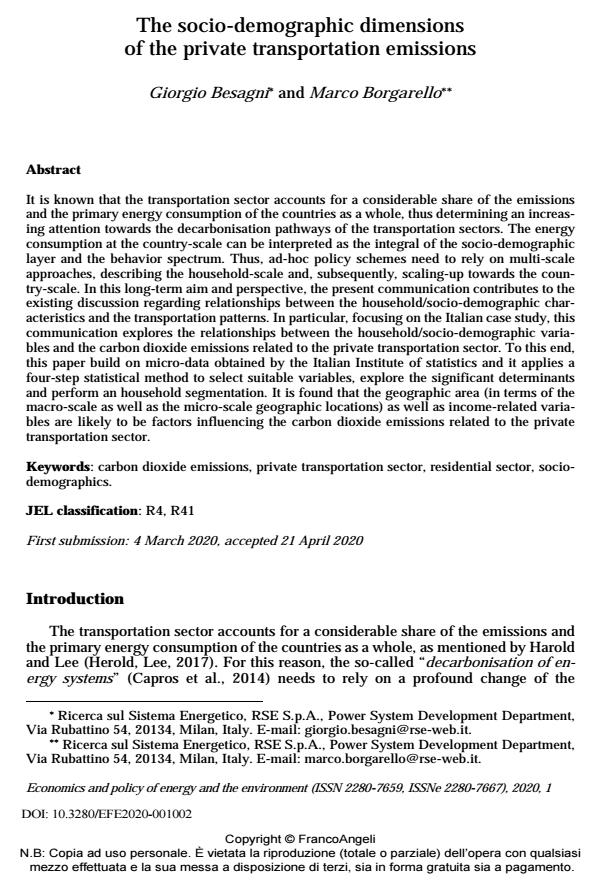The socio-demographic dimensions of the private transportation emissions
Journal title ECONOMICS AND POLICY OF ENERGY AND THE ENVIRONMENT
Author/s Giorgio Besagni, Marco Borgarello
Publishing Year 2020 Issue 2020/1
Language English Pages 12 P. 13-24 File size 221 KB
DOI 10.3280/EFE2020-001002
DOI is like a bar code for intellectual property: to have more infomation
click here
Below, you can see the article first page
If you want to buy this article in PDF format, you can do it, following the instructions to buy download credits

FrancoAngeli is member of Publishers International Linking Association, Inc (PILA), a not-for-profit association which run the CrossRef service enabling links to and from online scholarly content.
It is known that the transportation sector accounts for a considerable share of the emissions and the primary energy consumption of the countries as a whole, thus determining an increas-ing attention towards the decarbonisation pathways of the transportation sectors. The energy consumption at the country-scale can be interpreted as the integral of the socio-demographic layer and the behavior spectrum. Thus, ad-hoc policy schemes need to rely on multi-scale ap-proaches, describing the household-scale and, subsequently, scaling-up towards the country-scale. In this long-term aim and perspective, the present communication contributes to the ex-isting discussion regarding relationships between the household/socio-demographic character-istics and the transportation patterns. In particular, focusing on the Italian case study, this communication explores the relationships between the household/socio-demographic variables and the carbon dioxide emissions related to the private transportation sector. To this end, this paper build on micro-data obtained by the Italian Institute of statistics and it applies a four-step statistical method to select suitable variables, explore the significant determinants and perform an household segmentation. It is found that the geographic area (in terms of the macro-scale as well as the micro-scale geographic locations) as well as income-related variables are likely to be factors influencing the carbon dioxide emissions related to the private transportation sector.
Keywords: Carbon dioxide emissions, private transportation sector, residential sector, socio-demographics.
Jel codes: R4, R41
Giorgio Besagni, Marco Borgarello, The socio-demographic dimensions of the private transportation emissions in "ECONOMICS AND POLICY OF ENERGY AND THE ENVIRONMENT" 1/2020, pp 13-24, DOI: 10.3280/EFE2020-001002